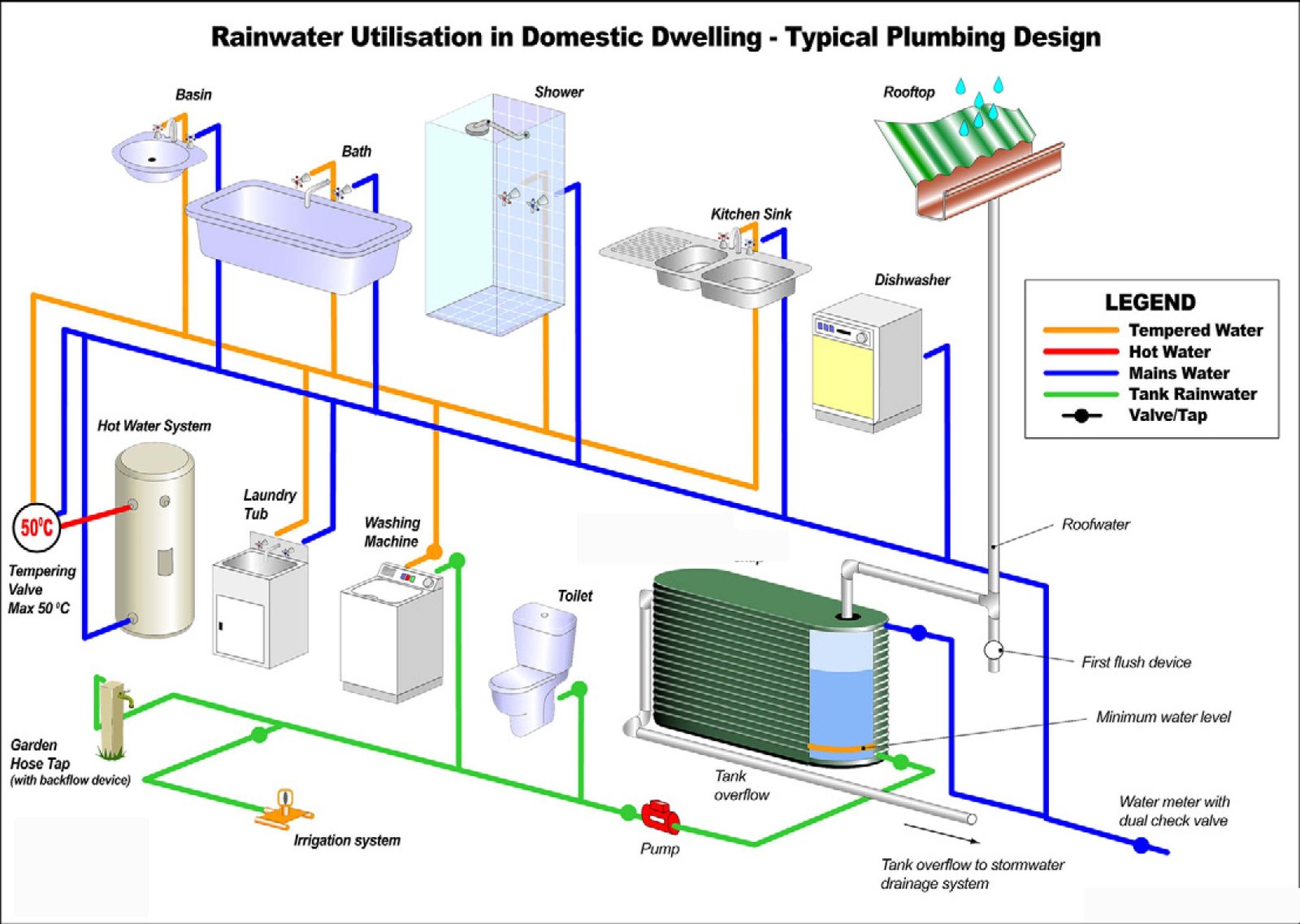Sustainable Technologies: Rainwater

Saving a life means saving humanity. Life is precious, even if it’s your own or anyone else’s. There are some ingredients which are of prime importance for the survival of people, one of them is water. The importance of water is undeniable because it is the basic necessity of life. Its usage not only covers domestic purposes like drinking, cooking and washing, but also industrial purposes like construction, agriculture, electricity production, sanitation, medical purposes etc. There are some sustainable technologies which are being used to save water.
In a nutshell, there’s no field of life which exists without water. Therefore, storing water from natural sources is need of the hour. The main natural resource of water is rainfall. In the northern areas of Pakistan, where there’s a lot of rainfall, people still find difficulty in getting water as the water springs are very far from each other, therefore they have to cover long distances to take water from them. That is the reason Hilly areas have more water shortage problem than other areas. As there’s more rainfall, we can store that water with a system called rainfall harvesting system also called rainfall catchment system. It is the process of collecting and storing the water of rain for human use. It can be either a simple barrel or a detailed project with pumps, tanks or purification system.
The following are the components of this system.
- Catchments: It’s the surface where rain directly falls.
- Coarse mesh: It prevents the passage of debris with water. It ensures the flow of clean water.
- Gutters: They are usually made of PVC pipes. They are used to transport water.
The size of the gutter should be in accordance with the flow during highest intensity rain. The idea is to make these pipes 10-15% over-sized.
- Conduits: pipelines which carry water from catchment to the harvesting area.
- First-flushing: the valve which forces water to the harvesting area.
- Filter: It removes remaining pollutants from water by using fiber, coarse sand or charcoal.
- Storage facility: These are the tanks in different sizes and shapes.
In Pakistan, this project is installed in the Azad Kashmir where they get to have a lot of rainfall. By the use of pipes and channels on the roofs of houses, the rain water is being stored and used for different purposes. It helps getting 6 laces liters of water annually. This storage can be increased. It is enough for surviving for 15-20 days without rain. If you store 1000 gallons of water, it’s enough for a home for 25-30 days and it will cost 40-50 rupees. Within these days, they witness another rainfall for the next storage. This amount of storage is 1/5th of the Mangla dam. It’s a best practice for climate change adaptation. This is environment friendly because it’s solving the problems of drinking water, sanitation, livelihood and erosion.
Now, there’s a question that ‘how to install this harvesting systems at your homes.’ The answer to this question is very simple. You need to follow these steps to make a rainfall harvesting system to fulfill the basic needs of your home.
- Attach a pipe at the catchment area of your home, or the place where rain falls to a tank or storage facility. The pipe would let the water move from catchment to the tank for storage. Make sure to add a coarse mesh over the pipe to filter the water.
A tip to be kept in mind is that the level of pipe at the tank should be below the level at catchment.
- Add an electric motor to the tank. It will let the water flow to the taps for daily usage.
This water can be used for the purposes as shown in the diagram below.



